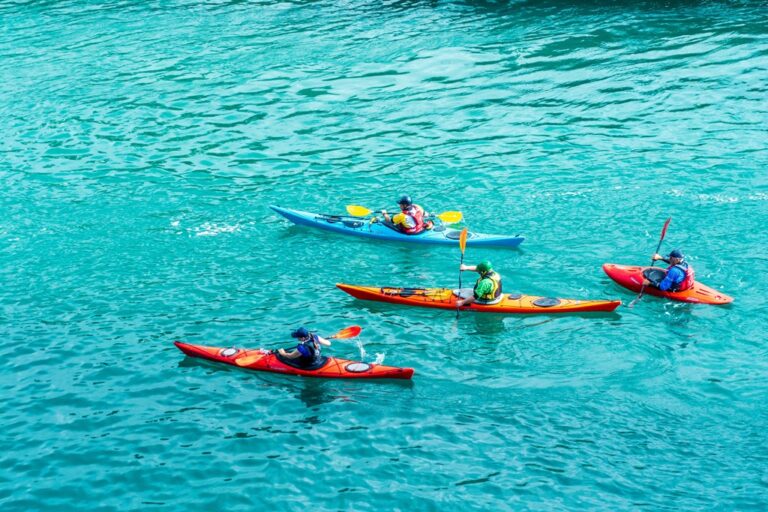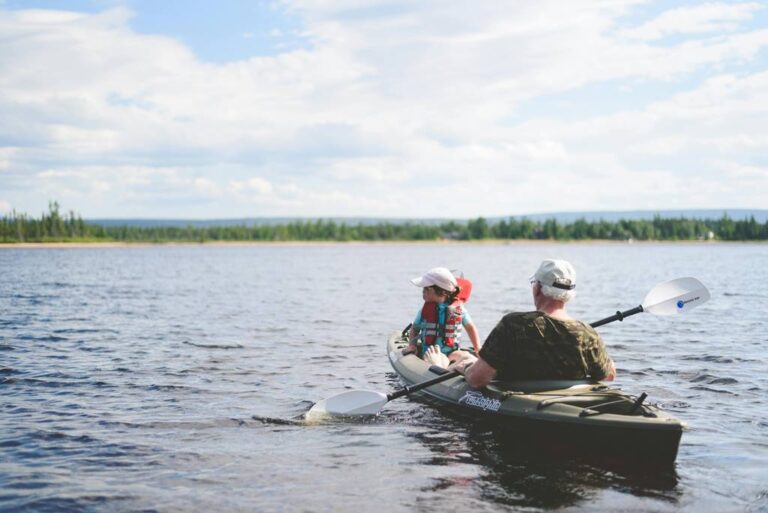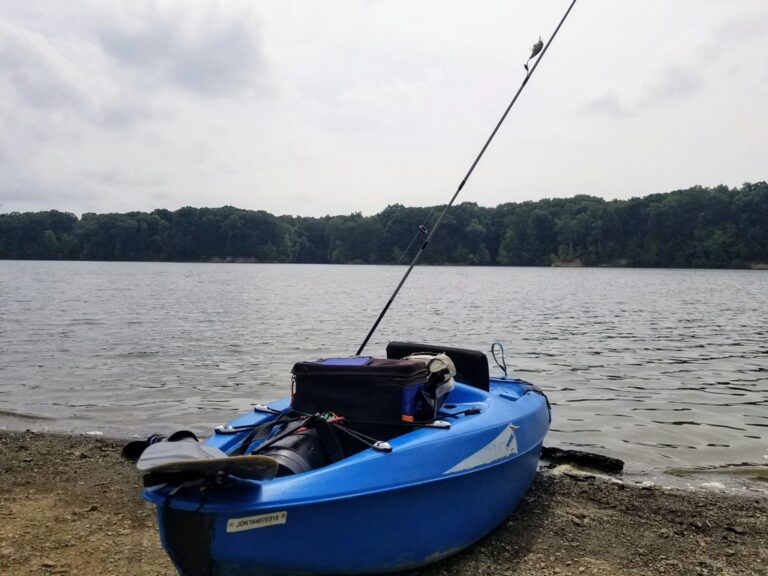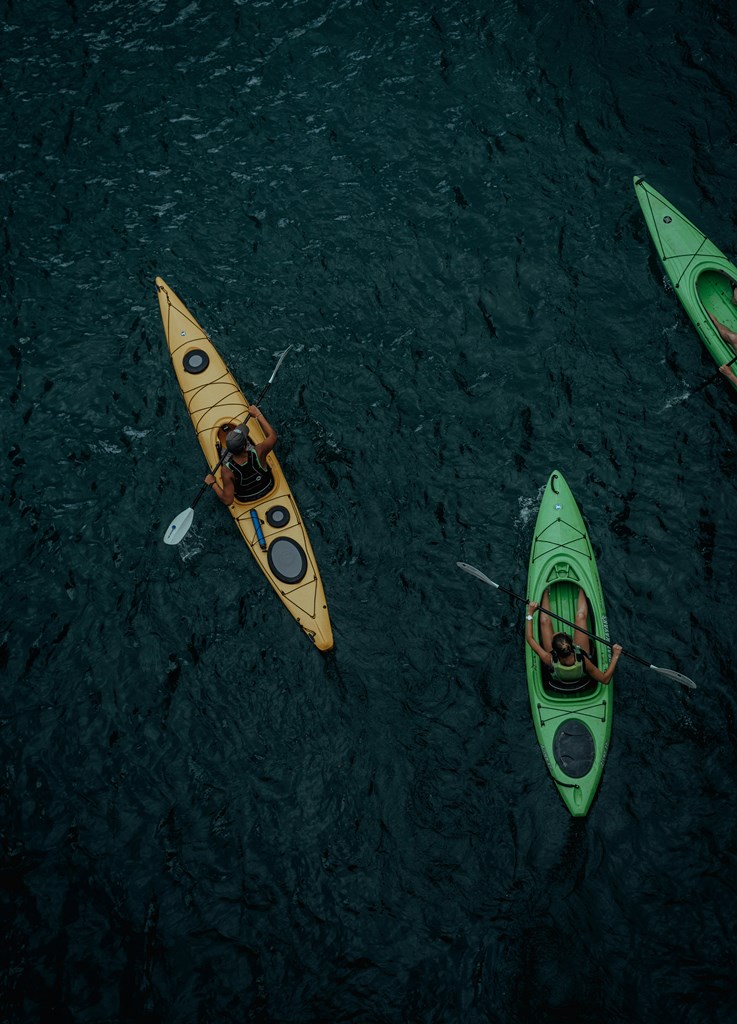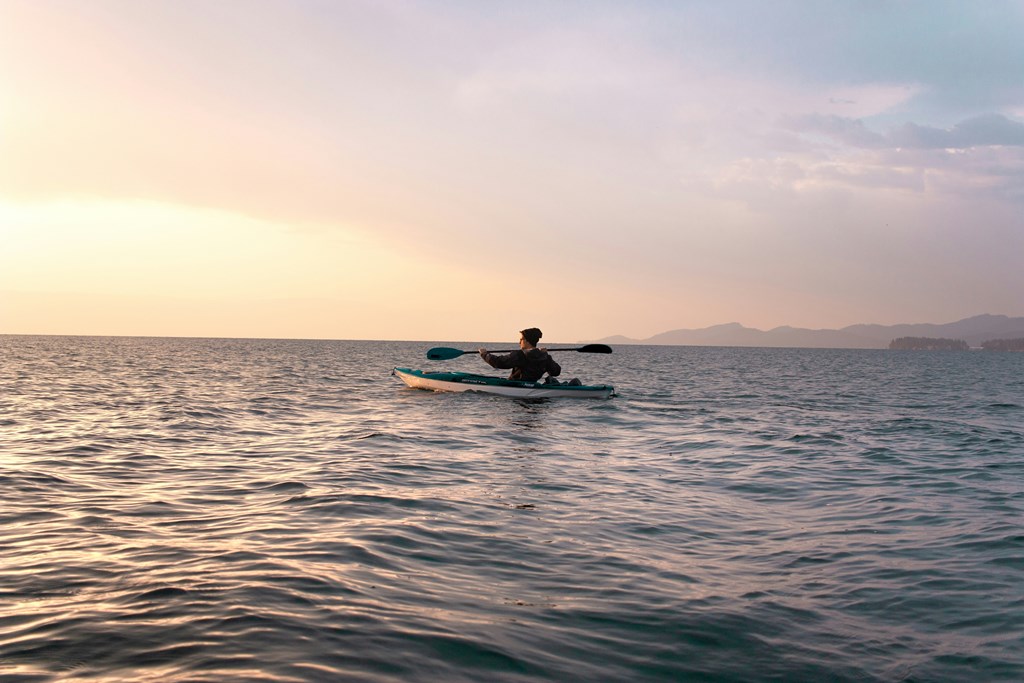
Table of Contents
Introduction

Horseshoe Bend, a geological masterpiece, stands as one of the most captivating landmarks in the American Southwest. Located near the town of Page, Arizona, this horseshoe-shaped incised meander of the Colorado River offers breathtaking views that leave visitors spellbound. But for river paddlers—whether in kayaks or on paddleboards—Horseshoe Bend is more than just a scenic vista; it’s an invitation to explore the waterways below. Glide along the emerald-green river, tracing the same curves that shaped this natural wonder, and immerse yourself in the red rock cliffs that guard its secrets. Whether you’re a seasoned kayaker or a first-time adventurer, Horseshoe Bend promises an unforgettable journey through its timeless beauty.
The Formation of Horseshoe Bend
A Geological Journey
Around 5 million years ago, the Colorado Plateau uplifted, and the meandering rivers that once flowed across the ancient landscape became trapped in their beds. Over time, the rivers carved through layers of sandstone, creating deep canyons and unique formations. Horseshoe Bend is one such marvel.
The Bend
Horseshoe Bend is aptly named for its distinctive shape—a roughly 1,000-foot (305-meter) deep, 270-degree horseshoe curve in Glen Canyon. The Colorado River gracefully winds around a sandstone escarpment, creating a breathtaking panorama. From the overlook, visitors gaze down onto the emerald-green waters of the Colorado River, which contrasts beautifully with the surrounding red rock cliffs.
Experiencing Horseshoe Bend
The Paddler’s Perspective
For kayakers and paddleboarders, Horseshoe Bend offers a unique opportunity to explore the river from a different angle. Here’s what you need to know:
- Paddling Access: While the overlook provides stunning views, the real magic lies on the water. Launch your kayak or paddleboard from nearby access points and venture into the heart of the horseshoe.
- River Exploration: Paddle along the meandering path of the Colorado River, tracing the same curves that shaped Horseshoe Bend. The calm waters allow for leisurely exploration and photography.
- Photography Paradise: Capture the iconic horseshoe shape from your kayak or paddleboard. The play of light and shadow against the red rock walls creates a photographer’s dream.
- Wildlife Watching: Keep an eye out for wildlife—bighorn sheep, eagles, and other desert creatures call this area home. Glide silently and observe nature up close.
Practical Tips for Paddlers
- Launch Points: Launch your kayak or paddleboard from Lee’s Ferry or other designated spots along the Colorado River. Check local regulations and permits.
- Safety First: Always wear a life jacket and carry safety essentials. The river can be deceptively calm, so be prepared for sudden changes.
- Sun Protection: Arizona sun can be intense. Wear sunscreen, a hat, and protective clothing. Hydrate well.
- Timing: Early mornings and late afternoons offer the best lighting for photography and a cooler paddling experience.
Jurisdictions and Boundaries
Horseshoe Bend straddles multiple jurisdictions:
- Glen Canyon National Recreation Area: The bend itself is part of Glen Canyon National Recreation Area.
- Grand Canyon National Park: About nine miles downstream, the Grand Canyon National Park begins.
- City of Page: The land north of the trail to the Horseshoe Bend overlook and the parking area for the trailhead fall within the City of Page.
- Navajo Nation: The land south of the parking area, the trail, and the overlook are on the Navajo Nation.
Available Services
- Parking and Fees:
- New visitor parking area at Horseshoe Bend Overlook with restrooms.
- Entrance fees are based on vehicle type (motorcycle, passenger vehicles, commercial vans, and buses).
- No acceptance of America The Beautiful/National Park Pass.
- Strict prohibition of parking along Highway 89.
- Rental Kayaks and Paddleboards:
- Single and double-person inflatable kayaks are available for relaxing paddling through Horseshoe Bend.
- Special Use Permits:
- Required for gatherings, commercial activities, weddings, demonstrations, filming, sporting races, and group events with 20 or more participants.
- Field Trips and Group Tours:
- While permits are not needed, reservations are recommended for field trips and group tours.
- Ranger-led tours and living history demonstrations are available.
- Picnic Shelters:
- First-come, first-served picnic shelters near the Visitor Center.
- Picnic tables are also available at the Highway 49 Boat Ramp.
Conclusion
As you paddle through the tranquil waters of Horseshoe Bend, remember that this natural wonder has witnessed millions of years of geological history. Whether you’re a seasoned kayaker or a first-time paddleboarder, Horseshoe Bend invites you to connect with the ancient forces that shaped this breathtaking landscape.

